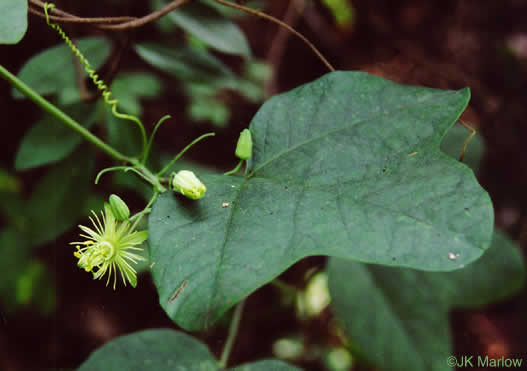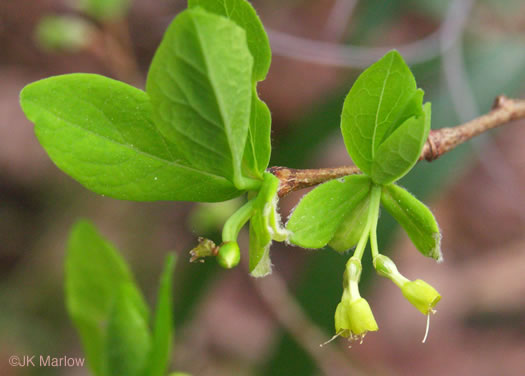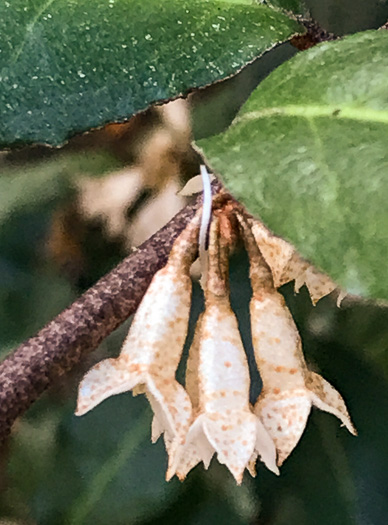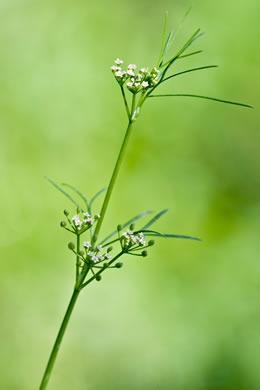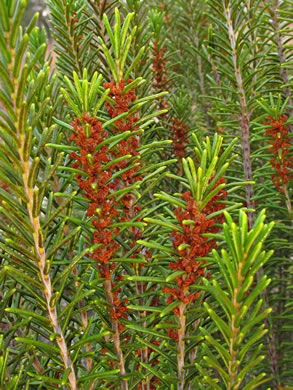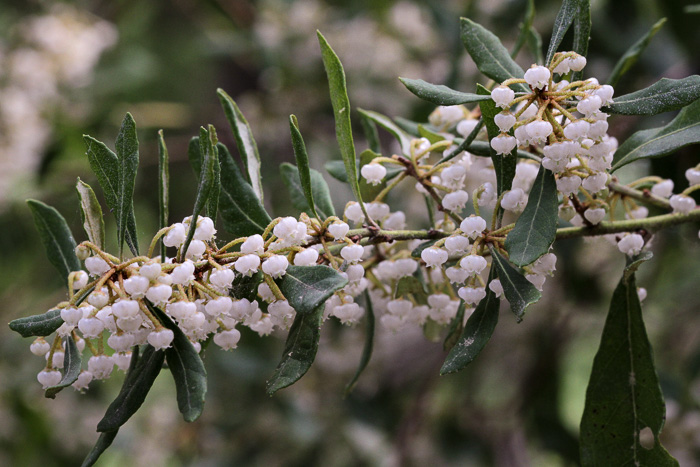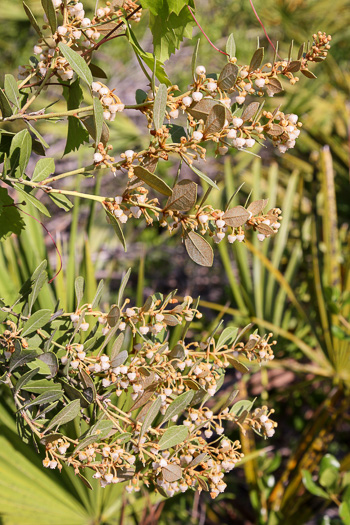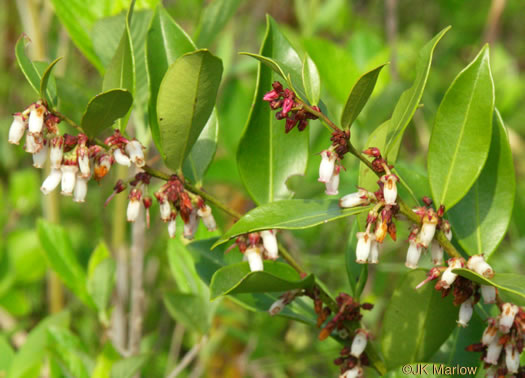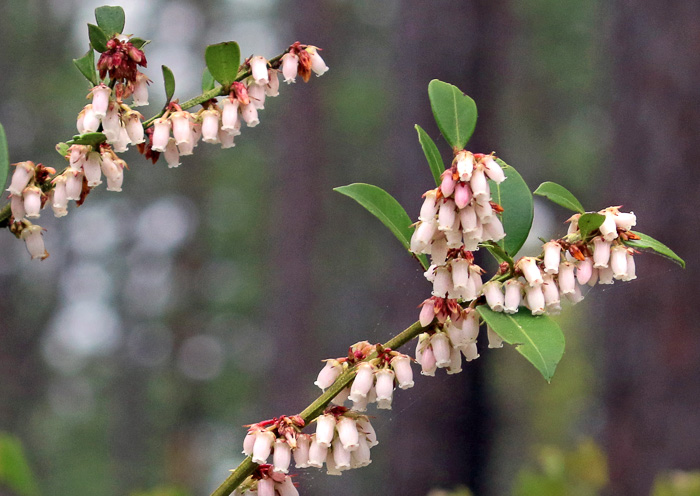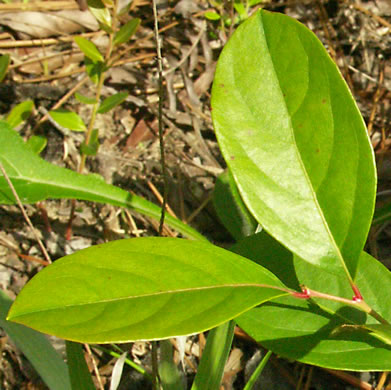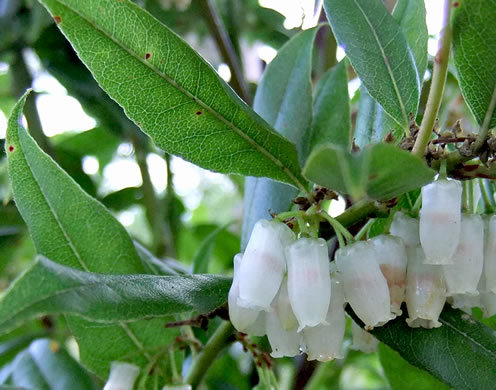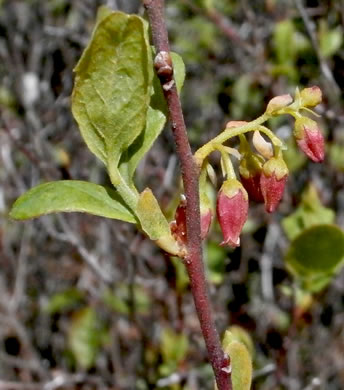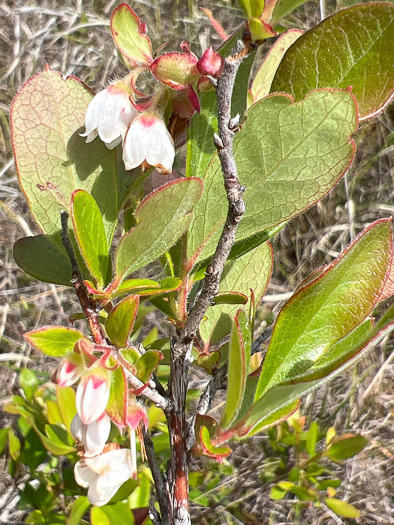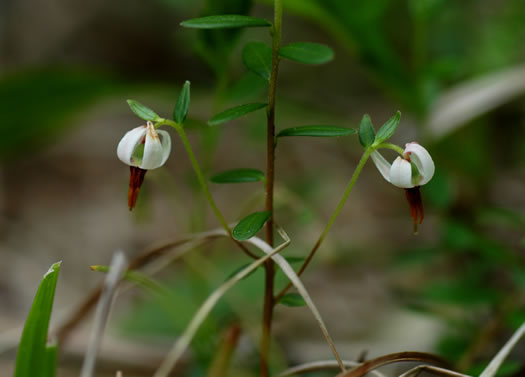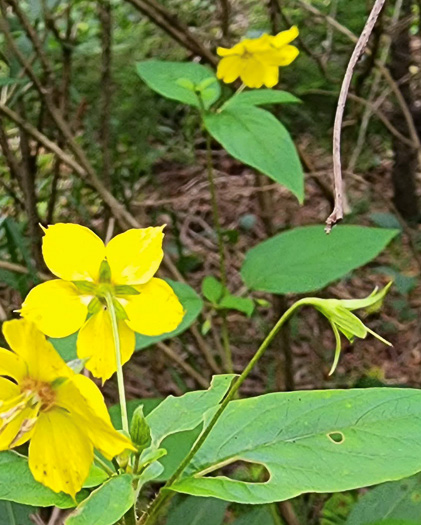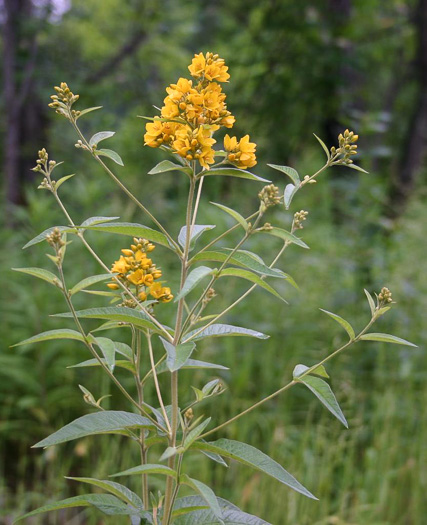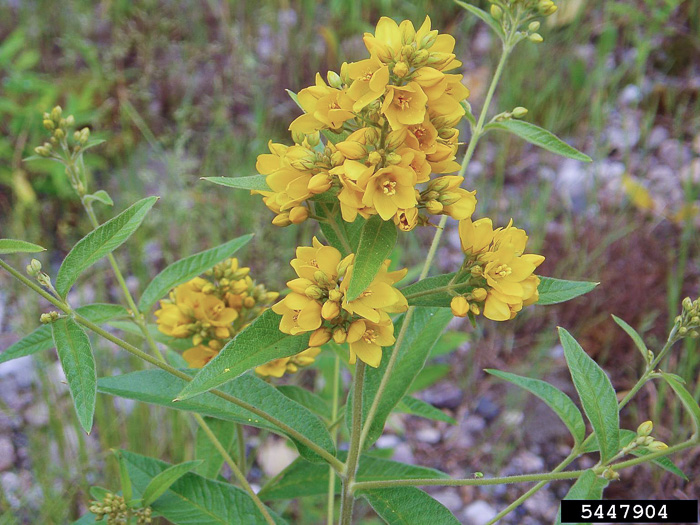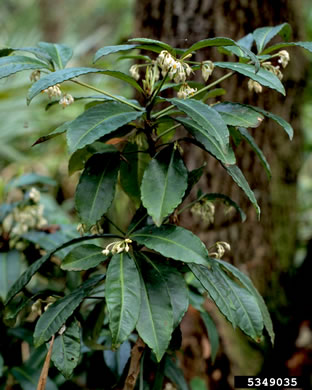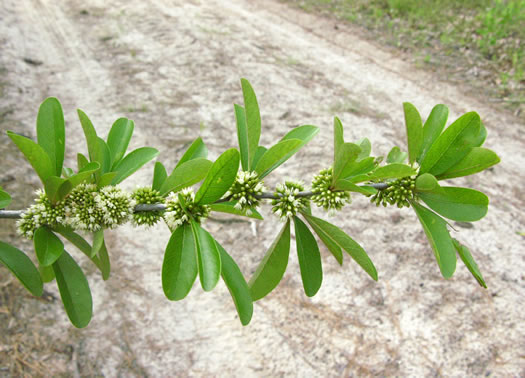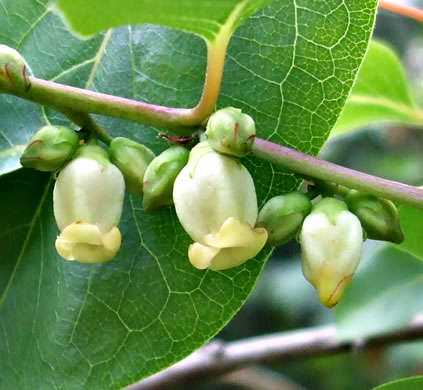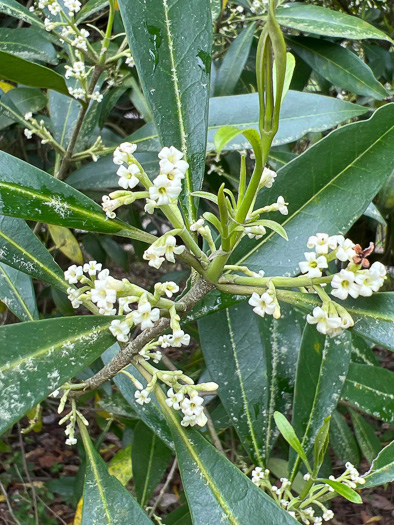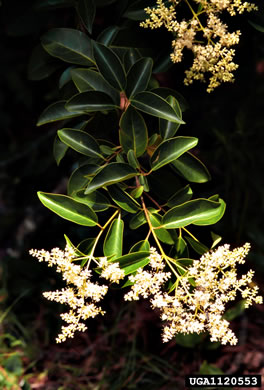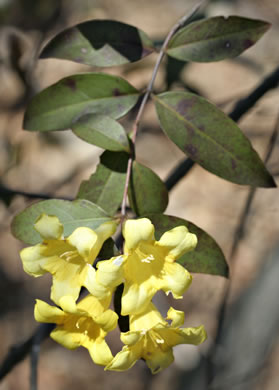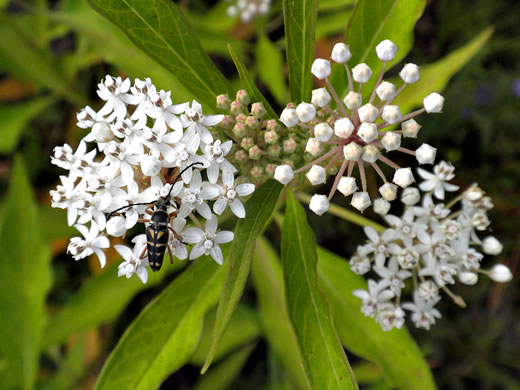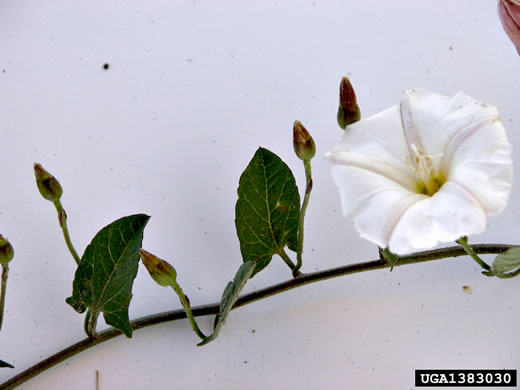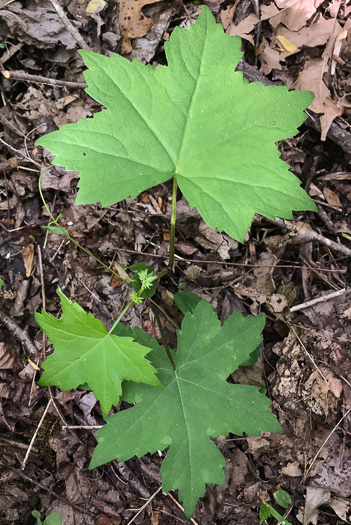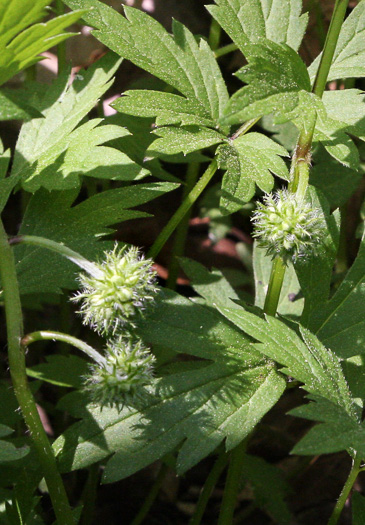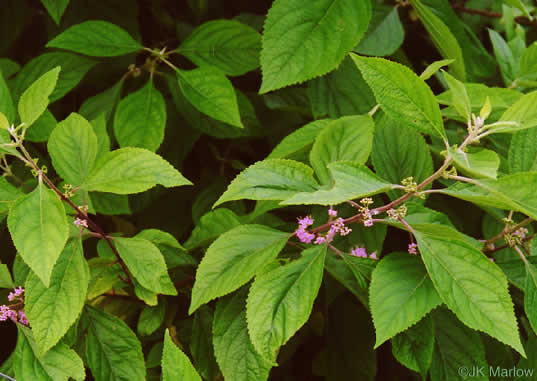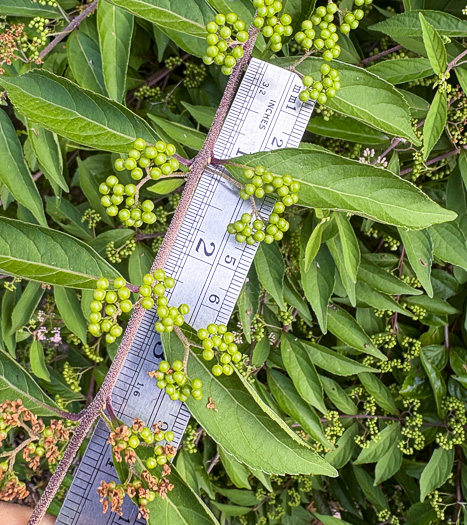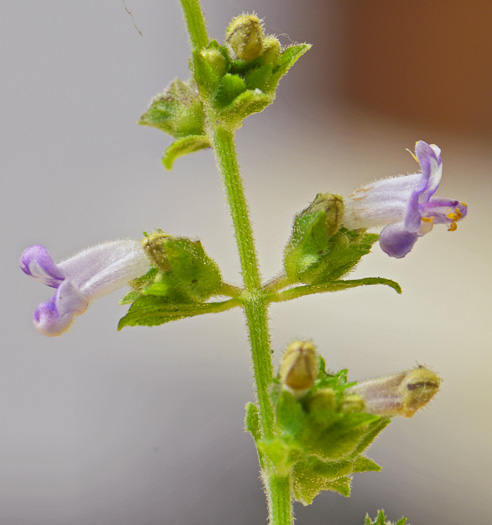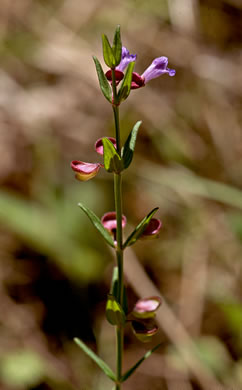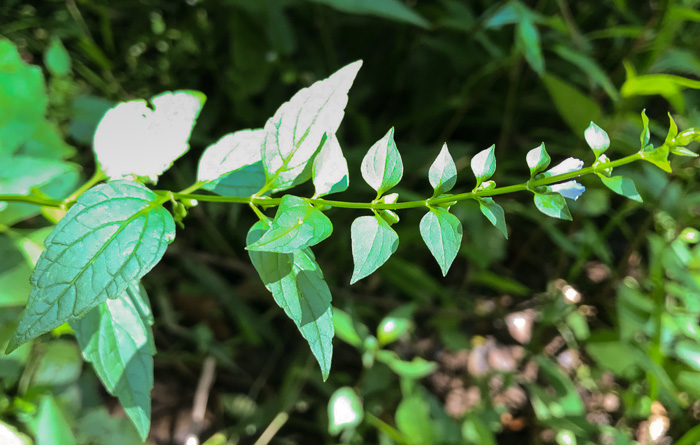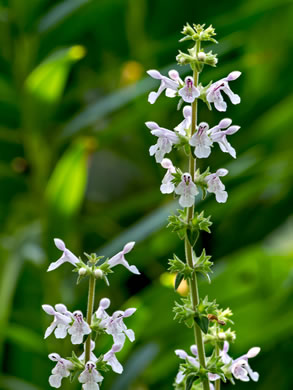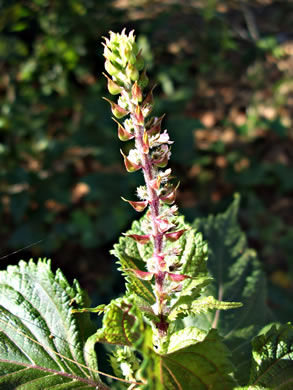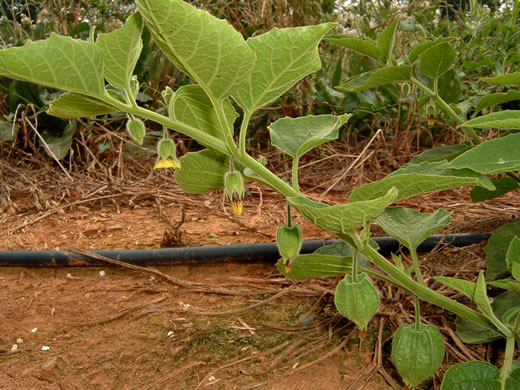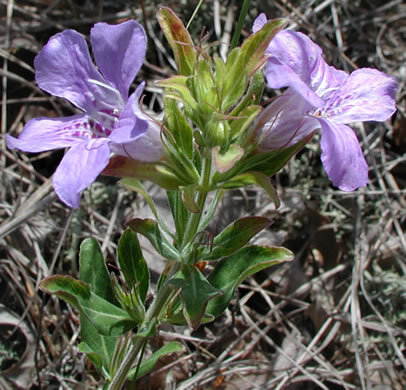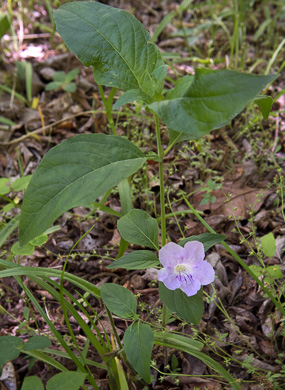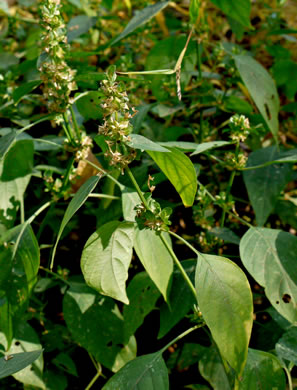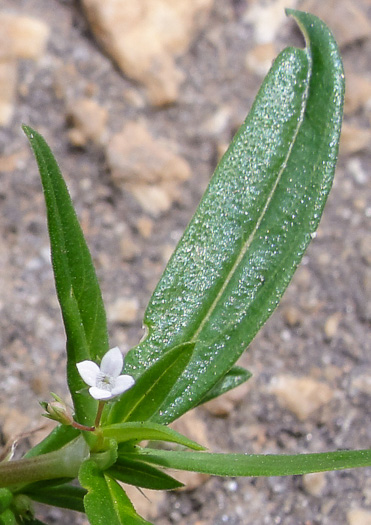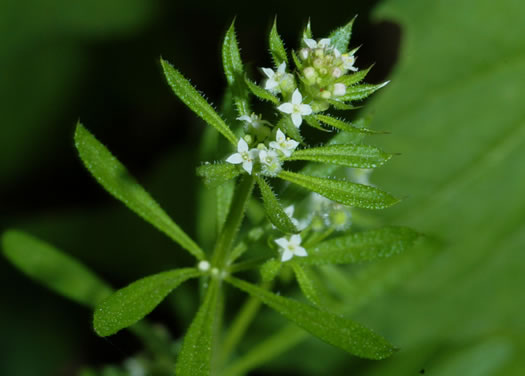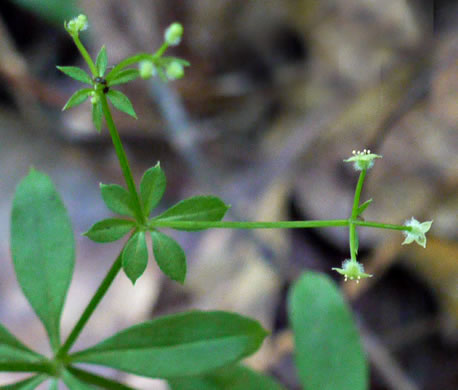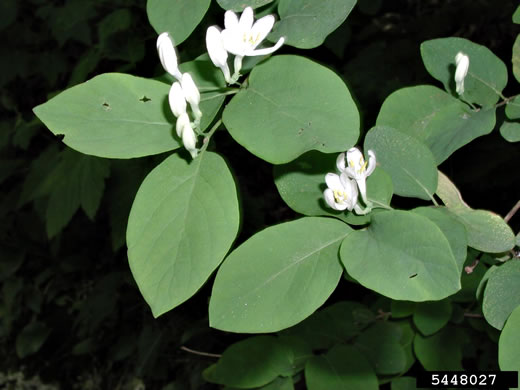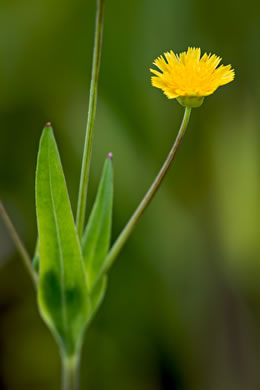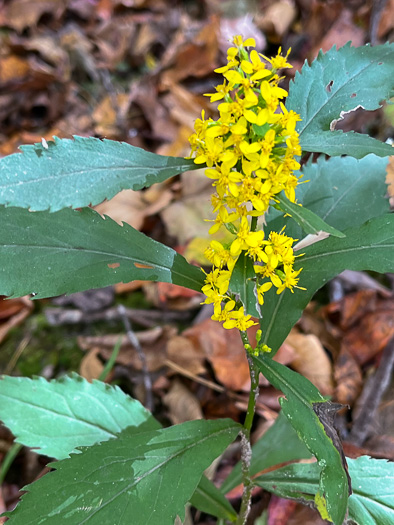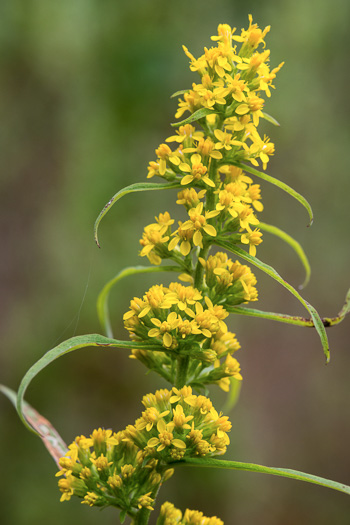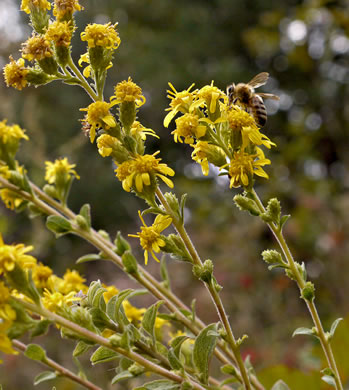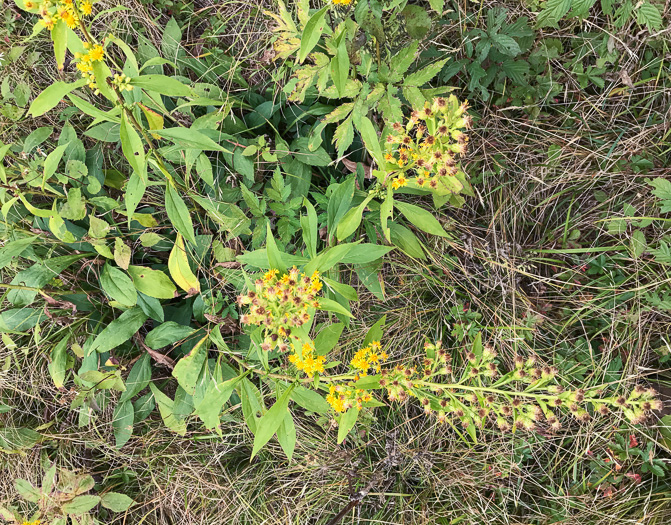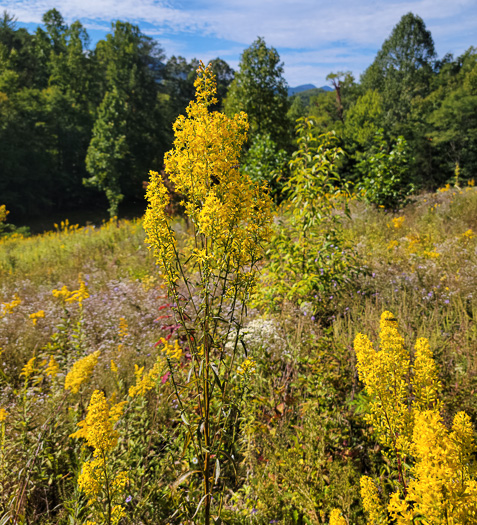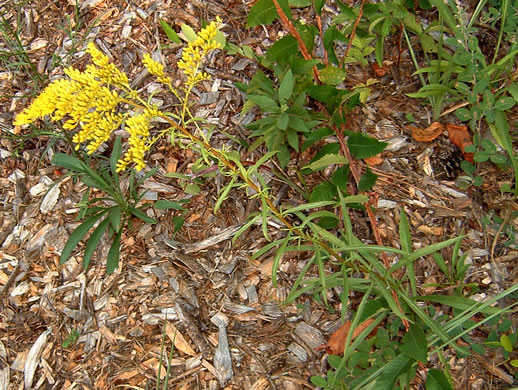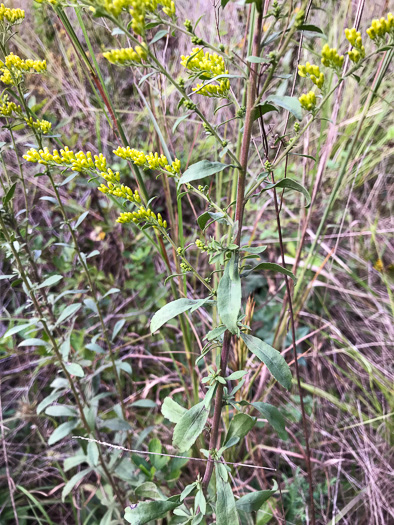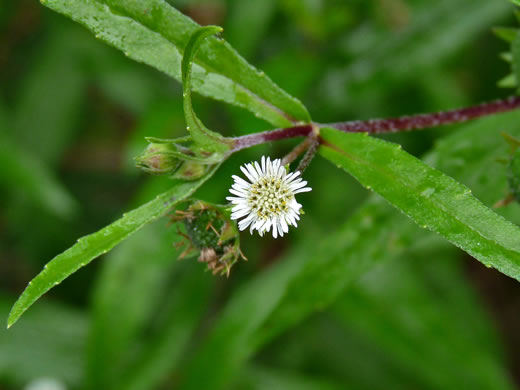Your search found 116 image(s) illustrating the term "axillary." For a written explanation, click on "axillary" in the Glossary.
PAGE 1 PAGE 2
To see larger pictures, click or hover over the thumbnails.
To go to the plant's detail page, click its name.
 Yellow Passionflower,
Passiflora lutea
Yellow Passionflower,
Passiflora lutea
Vines climbing by axillary, simple tendrils, per Vascular Flora of the Carolinas (Radford, Ahles, & Bell, 1968).
 Eastern Leatherwood,
Dirca palustris
Eastern Leatherwood,
Dirca palustris
Flowers in axillary clusters of 2-3; floral tube 5-6mm long, per Native Shrubs and Woody Vines of the Southeast (Foote & Jones, 1989).
 Thorny Olive,
Elaeagnus pungens
Thorny Olive,
Elaeagnus pungens
Flowers tubular, 4-lobed, silvery-white to brown, in axillary clusters, per A Field Guide for the Identification of Invasive Plants in Southern Forests (Miller, Chambliss, & Lowenstein, 2010).
 Centella,
Centella erecta
Centella,
Centella erecta
Involucre of 2 conspicuous bracts. Umbels simple, subcapitate, axillary, per Vascular Flora of the Carolinas (Radford, Ahles, & Bell, 1968).
 Marsh-parsley,
Cyclospermum leptophyllum
Marsh-parsley,
Cyclospermum leptophyllum
Umbels leaf-opposed (not terminal and not axillary), per Weakley's Flora (2015).
 Florida Rosemary,
Ceratiola ericoides
Florida Rosemary,
Ceratiola ericoides
Reddish or yellowish flowers in axillary clusters of 2-3, in November, per Native Shrubs and Woody Vines of the Southeast (Foote & Jones, 1989).
 Rusty Lyonia,
Lyonia ferruginea
Rusty Lyonia,
Lyonia ferruginea
Axillary clusters of fragrant, white, urn-shaped flowers. — Will Stuart
 Rusty Lyonia,
Lyonia ferruginea
Rusty Lyonia,
Lyonia ferruginea
Flowers in axillary facscicles on twigs of the previous year, per Native Shrubs and Woody Vines of the Southeast (Foote & Jones, 1989).
 Shining Fetterbush,
Lyonia lucida
Shining Fetterbush,
Lyonia lucida
Flowers in axillary fascicles, per Vascular Flora of the Carolinas (Radford, Ahles, & Bell, 1968).
 Shining Fetterbush,
Lyonia lucida
Shining Fetterbush,
Lyonia lucida
Flowers grow in rows of axillary clusters toward branch tips, per Wildflowers of the Sandhills Region (Sorrie, 2011).
 Staggerbush,
Lyonia mariana
Staggerbush,
Lyonia mariana
Broadly elliptic leaves ascending at 45 degrees, w bright pink axillary buds, per Weakley's Flora (2022).
 Tall Fetterbush,
Agarista populifolia
Tall Fetterbush,
Agarista populifolia
Racemes short, axillary, usually < 15-flowered. Corolla narrowly urdeolate, per Vascular Flora of the Carolinas (Radford, Ahles, & Bell, 1968).
 Black Huckleberry,
Gaylussacia baccata
Black Huckleberry,
Gaylussacia baccata
Flowers in axillary racemes on second-year wood, racemes 0.5-1.5cm long, per Vascular Flora of the Carolinas (Radford, Ahles, & Bell, 1968).
 Mosier's Huckleberry,
Gaylussacia mosieri
Mosier's Huckleberry,
Gaylussacia mosieri
Flowers in axillary, usually few-flowered, bracteate racemes on wood of the preceding season, per Aquatic & Wetland Plants of Southeastern US (Godfrey & Wooten, 1979 & 1981).
 Cranberry,
Vaccinium macrocarpon
Cranberry,
Vaccinium macrocarpon
Flowers solitary, axillary on old growth; each pedicel with 2 bracts, per Vascular Flora of the Carolinas (Radford, Ahles, & Bell, 1968).
 Fringed Loosestrife,
Steironema ciliatum
Fringed Loosestrife,
Steironema ciliatum
Flowers on slender axillary pedicels, per Wildflowers of the Eastern United States (Duncan & Duncan, 1999).
 Garden Loosestrife,
Lysimachia vulgaris
Garden Loosestrife,
Lysimachia vulgaris
Inflorescences panicles, terminal OR terminal and axillary in distal leaves, per Flora of North America.
 Garden Loosestrife,
Lysimachia vulgaris
Garden Loosestrife,
Lysimachia vulgaris
Flowers in terminal or axillary panicles, corollas without dark markings, per Vascular Flora of Illinois, 4th ed (Robert Mohlenbrock).
 Coral Ardisia,
Ardisia crenata
Coral Ardisia,
Ardisia crenata
Flowers in axillary clusters dangling below the leaves, per A Field Guide for the Identification of Invasive Plants in Southern Forests (Miller, Chambliss, & Lowenstein, 2010).
 Buckthorn Bumelia,
Sideroxylon lycioides
Buckthorn Bumelia,
Sideroxylon lycioides
Inflorescence of 8-40 clustered flowers from short axillary spur shoots, per Vascular Flora of the Carolinas (Radford, Ahles, & Bell, 1968).
 American Persimmon,
Diospyros virginiana
American Persimmon,
Diospyros virginiana
Flowers inconspicuous, axillary, urceolate, per Vascular Flora of the Carolinas (Radford, Ahles, & Bell, 1968).
 Devilwood,
Cartrema americanum
Devilwood,
Cartrema americanum
Flowers in short axillary panicles (rarely racemes), short-pedicellate, per Vascular Flora of the Carolinas (Radford, Ahles, & Bell, 1968).
 Glossy Privet,
Ligustrum lucidum
Glossy Privet,
Ligustrum lucidum
Loosely branching, terminal and upper axillary conical clusters of flowers, per A Field Guide for the Identification of Invasive Plants in Southern Forests (Miller, Chambliss, & Lowenstein, 2010).
 Carolina Jessamine,
Gelsemium sempervirens
Carolina Jessamine,
Gelsemium sempervirens
Flowers in fragrant, few-flowered axillary clusters (cymes) on new growth, per Forest Plants of the Southeast and Their Wildlife Uses (Miller & Miller, 2005).
 Swamp Milkweed,
Asclepias perennis
Swamp Milkweed,
Asclepias perennis
Flowers in 1-2" wide axillary umbels, hoods with prominent protruding horns, per Atlantic Coastal Plain Wildflowers (Nelson, 2006).
 Field Bindweed,
Convolvulus arvensis
Field Bindweed,
Convolvulus arvensis
Axillary peduncles about 1/2 longer than the subtending leaf, per Vascular Flora of the Carolinas (Radford, Ahles, & Bell, 1968).
 Mapleleaf Waterleaf,
Hydrophyllum canadense
Mapleleaf Waterleaf,
Hydrophyllum canadense
Axillary peduncles shorter than the petiole of the subtending leaf, per Vascular Flora of the Carolinas (Radford, Ahles, & Bell, 1968).
 Virginia Waterleaf,
Hydrophyllum virginianum
Virginia Waterleaf,
Hydrophyllum virginianum
Axillary peduncles longer than the petiole of the subtending leaf, per Vascular Flora of the Carolinas (Radford, Ahles, & Bell, 1968).
 American Beautyberry,
Callicarpa americana
American Beautyberry,
Callicarpa americana
The flowers are in axillary clusters, per Woody Plants of the Blue Ridge (Lance).
 Chinese Beautyberry,
Callicarpa dichotoma
Chinese Beautyberry,
Callicarpa dichotoma
Inflorescence supra-axillary, diverging from twig 1-4mm above the leaf axil, per Weakley's Flora (2025).
 Tropical Bushmint,
Cantinoa mutabilis
Tropical Bushmint,
Cantinoa mutabilis
Flowers borne in dense, many-flowered, axillary clusters, per Weakley's Flora (2022).
 Shale-barren Skullcap,
Scutellaria leonardii
Shale-barren Skullcap,
Scutellaria leonardii
Flowers axillary, corolla 6.5-9mm long; bracts resembling stem leaves, per Weakley's Flora (2012).
 Mad-dog Skullcap,
Scutellaria lateriflora
Mad-dog Skullcap,
Scutellaria lateriflora
Racemes terminal or terminating axillary leafy branches, per Vascular Flora of the Carolinas (Radford, Ahles, & Bell, 1968).
 Carolina Hedgenettle,
Stachys caroliniana
Carolina Hedgenettle,
Stachys caroliniana
Axillary cymules each with 3 flowers, the verticils thus 6-flowered, per A new hedge-nettle (Stachys: Lamiaceae) from SC (Nelson & Rayner, 2014).
 Beefsteak-plant,
Perilla frutescens
Beefsteak-plant,
Perilla frutescens
Flowers borne in loose, elongate, terminal and axillary spikelike racemes, per Wildflowers of the Southern Mountains (Smith, 1998).
 Clammy Ground-cherry,
Physalis heterophylla
Clammy Ground-cherry,
Physalis heterophylla
Flowers axillary, solitary, per Vascular Flora of the Carolinas (Radford, Ahles, & Bell, 1968).
 Ivyleaf Speedwell,
Veronica hederifolia
Ivyleaf Speedwell,
Veronica hederifolia
Flowers appear axillary and have 4 distinct sepals. Plant pubescent to pilose, per Vascular Flora of the Carolinas (Radford, Ahles, & Bell, 1968).
 Common Gerardia,
Agalinis tenuifolia
Common Gerardia,
Agalinis tenuifolia
Leaf blades narrowly linear to linear-lanceolate; axillary fascicles absent or < subtending leaves, per Flora of North America.
 Blue Twinflower,
Dyschoriste oblongifolia
Blue Twinflower,
Dyschoriste oblongifolia
Flowers axillary, bluish-purple with dark spots, per Guide to the Wildflowers of SC, 1st ed. (Porcher & Rayner, 2001).
 Pursh's Wild-petunia,
Ruellia purshiana
Pursh's Wild-petunia,
Ruellia purshiana
Flowers usually solitary on axillary peduncles at middle and lower nodes, per Vascular Flora of the Carolinas (Radford, Ahles, & Bell, 1968).
 Branched Foldwing,
Dicliptera brachiata
Branched Foldwing,
Dicliptera brachiata
Flowers borne in axillary clusters, per Wildflowers of Tennessee, the Ohio Valley, and the Southern Appalachians (Horn, Cathcart, Hemmerly, & Duhl, 2005).
 Diamond-flower,
Oldenlandia corymbosa
Diamond-flower,
Oldenlandia corymbosa
Flowers axillary, peduncles and pedicels filiform, per Vascular Flora of the Carolinas (Radford, Ahles, & Bell, 1968).
 Cleavers,
Galium aparine
Cleavers,
Galium aparine
3-5 lobed white corolla, single or in terminal and axillary clusters, per Forest Plants of the Southeast and Their Wildlife Uses (Miller & Miller, 2005).
 Sweet-scented Bedstraw,
Galium triflorum
Sweet-scented Bedstraw,
Galium triflorum
Flowers in groups of 3 on long axillary and terminal peduncles, per Wildflowers of the Southern Mountains (Smith, 1998).
 Amur Bush-honeysuckle,
Lonicera maackii
Amur Bush-honeysuckle,
Lonicera maackii
Fragrant, axillary paired flowers; peduncle shorter than petioles, per Flora of China.
 Tatarian Honeysuckle,
Lonicera tatarica
Tatarian Honeysuckle,
Lonicera tatarica
Inflorescences axillary paired flowers; peduncle 1-2cm, per Flora of China.
 Opposite-leaf Dwarf-dandelion,
Krigia cespitosa
Opposite-leaf Dwarf-dandelion,
Krigia cespitosa
Compact flower heads are borne singly at the end of short axillary stalks, per Atlantic Coastal Plain Wildflowers (Nelson, 2006).
 Appalachian Goldenrod,
Solidago flaccidifolia
Appalachian Goldenrod,
Solidago flaccidifolia
Heads in short axillary & terminal racemiform/paniculiform, non-secund arrays. Rays 2-4(-6), per Flora of North America.
 Curtis's Goldenrod,
Solidago curtisii
Curtis's Goldenrod,
Solidago curtisii
Heads in short axillary and terminal non-secund arrays, per Flora of North America.
 Downy Ragged Goldenrod,
Solidago petiolaris var. petiolaris
Downy Ragged Goldenrod,
Solidago petiolaris var. petiolaris
Inflorescence predominantly axillary, w well-developed lvs at least lower part, per Weakley's Flora.
 Skunk Goldenrod,
Solidago glomerata
Skunk Goldenrod,
Solidago glomerata
A dense elliptical terminal cluster in addition to the axillary clusters, per Vascular Plants of North Carolina.
 Narrowleaf Showy Goldenrod,
Solidago rigidiuscula
Narrowleaf Showy Goldenrod,
Solidago rigidiuscula
Inf. panicle-like usually w several to many ascending branches and ovoid in outline, or axillary, per Weakley's Flora (2023).
 Small's Goldenrod,
Solidago pinetorum
Small's Goldenrod,
Solidago pinetorum
Upper stem leaves spreading or reflexed, w axillary fascicles of reduced lvs, per Weakley's Flora.
 Eastern Gray Goldenrod,
Solidago nemoralis
Eastern Gray Goldenrod,
Solidago nemoralis
Mid and distal stem leaves sometimes subtending axillary tufts of leaves, per Flora of North America.
 Marsh Flattop Goldenrod,
Euthamia weakleyi
Marsh Flattop Goldenrod,
Euthamia weakleyi
Leaves >3mm wide, without axillary fascicles, per Weakley's Flora (2015).
 Eclipta,
Eclipta prostrata
Eclipta,
Eclipta prostrata
Flowers are in small axillary and terminal clusters, per Wildflowers of the Southern Mountains (Smith, 1998).

